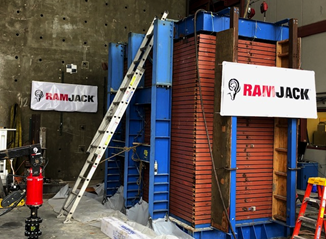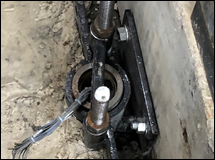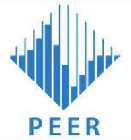

Copyright © 2011-25 Helical Pile World, LLC. All Rights Reserved.
Home | Engineers | Manufacturers | Installation Contractors | News | Technical Advisors | Contact Us







Soil Liquefaction Test of Ram Jack Helical Piles in Seismic Events
April, 2019

RAM JACK HELICALS PROVEN IN LIQUEFACTION SIMUL ATION TEST
ATION TEST
Ram Jack was honored to participate in the very first liquefaction testing of remedial repair piles ever to take place in the United States. The shake test occurred on April 2, 2019, at the University of California, San Diego and was sponsored by PEER (the Pacific Earthquake Engineering Research Center), which is a consortium of universities along the west coast dedicated to furthering research and testing just like this one. Watch the video now.

UCSD provided a large liquefaction soil box (measuring over 10 feet high) positioned on a shake table that simulated seismic conditions.
This liquefaction simulation test follows the credible large-scale shake table test, performed to quantify the seismic response of helical piles in dry sands. That large-scale test, also performed at UCSD, under the observation of Dr. Amy B. Cerato, Ph.D., P.E., demonstrated that Ram Jack helical piles far exceeded expectations during various, sequenced earthquake shaking. With the outstanding outcome of the test results, Ram Jack helical piles were once again put to the test, only this time in a liquefaction zone.
In June of 2018, the liquefaction soil box was fitted with a foundation system and block weights, and then shake-tested as a “control” test to measure the impact of liquefaction in a seismic event on a foundation with no support measures in place. The result was over 11 inches of foundation settlement, which would almost surely cause any structure to collapse.
In efforts to find a cost-effective solution to mitigate foundation failure in liquefaction zones, Ramin Motamed, Ph.D., P.E., from the University of Nevada, Reno began researching helical piles and quickly learned about Ram Jack. Dr. Motamed invited Ram Jack to participate in the second round of testing, but this time, measurable results were available by implementing four (4) Ram Jack helical piles.
(View our helical pile drawings)

Ram Jack installed (4) 3 1/2" diameter (threaded connection) piles with (4) 4021 ICC recognized, powder-coated brackets.
Ram Jack helical piles were precisely installed under the same loaded footing that was used in the controlled test performed in June. The soil conditions and magnitude of the seismic force were also identical. Once the testing was complete, the foundation settlement was quickly evaluated and measured. Typically, the limit of settlement that a building's foundation can take is between one and one and a half inches; however, Ram Jack’s helical piles proved to perform exceptionally well, resulting in less than half an inch of settlement.
The data obtained from the test will aid engineers and code officials in revising building codes utilizing helical piles in seismic areas not only for new construction but for seismic retrofits of existing buildings. The predictable performance of Ram Jack helical piles is becoming known around the world. Ram Jack has high hopes of being involved in various seismic projects as building codes continue to become stricter in the future. They continue to lead the industry in research on the behavior of helical piles during seismic events and will continue to do so for years to come.
Contact Information:
Ram Jack Systems Distribution
13655 County Road 1570
Ada, OK 74820
(888) 332-9909



